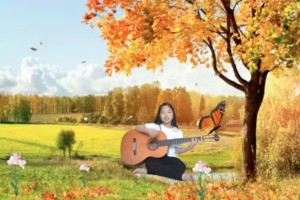In elementary schools, students often produce movies to document and reflect on their learning. “Quiet on the set!” “Recording!” and “We’ve got it!” are common cries as young children direct and film their own productions. These students are not passive consumers of media, but capable creators of multi-media texts.
Through movies, students can construct meaning and communicate understanding with greater creativity than ever before. They develop digital and visual literacy across every subject, as they engage in research, planning, editing and collaboration to achieve the intended result. Once finalised, students share their message with a global audience by embedding movies in blogs.
Most recently, students have embraced green screen technology. The ability to transport themselves anywhere in the world has facilitated even greater creativity and higher-level content in their films. Students select visuals more discerningly and write sophisticated scripts to complement, explain or engage with the background.
6 Green-Screen Projects from an Elementary School:
1. Story Telling
Pre-K students wrote an adaptation of the much-loved book “Brown Bear, Brown Bear, What Do You See?” Using a green-screen, our youngest students jumped inside the book to narrate the text and act out their drawings. (To see more, follow @apapaseit.)

2. Sports Reporting
In PE, teams of students designed original games, played them in class and filmed each match. Then they assumed the role of sports reporters, explaining the rules, equipment and scoring system, as the video rolled behind them. (See more here.)

3. Documentaries
During a science inquiry, students were fascinated by images of natural disasters. They took on the role of television scientists, explaining cause and impact while crouching in front of active volcanoes, tsunamis and avalanches.

4. Reflections
Following a field trip, students collated photos and videos from their day at the farm. With these as backgrounds, they interviewed each other about new learning, connections and memorable moments. (See more here.)

5. Reality Television
During a food inquiry, students stepped onto the set of MasterChef to explain how each ingredient was grown, harvested, transported and preserved before service to the judge. (See more here.)

6. Music Videos
As part of an environment unit, students created a music video to persuade the audience to reduce, reuse and recycle paper. They recorded vocals and performed in front of computer-generated forests. (Watch the video here.)

In each project, there are several common elements. Most importantly, the movie itself is not the end goal. The purpose is always to create meaning and communicate understanding. Green-screen technology is a powerful tool, which adds flexibility to the product and places creative control firmly in the hands of the students.
There are also core skills, such as storyboarding, script writing and verbal communication, which are critical to the success of each product.
Finally, while a green wall is necessary and lighting is ideal, it is our e-Learning Coordinators who provide the mentoring, hands-on support and trouble-shooting for effective technology integration. The heroes in this story are Alfredo Papaseit (@apapaseit) and Anna Davies.
With this model, every idea is possible, creativity flourishes and learning is enhanced. And that’s a wrap, folks!


